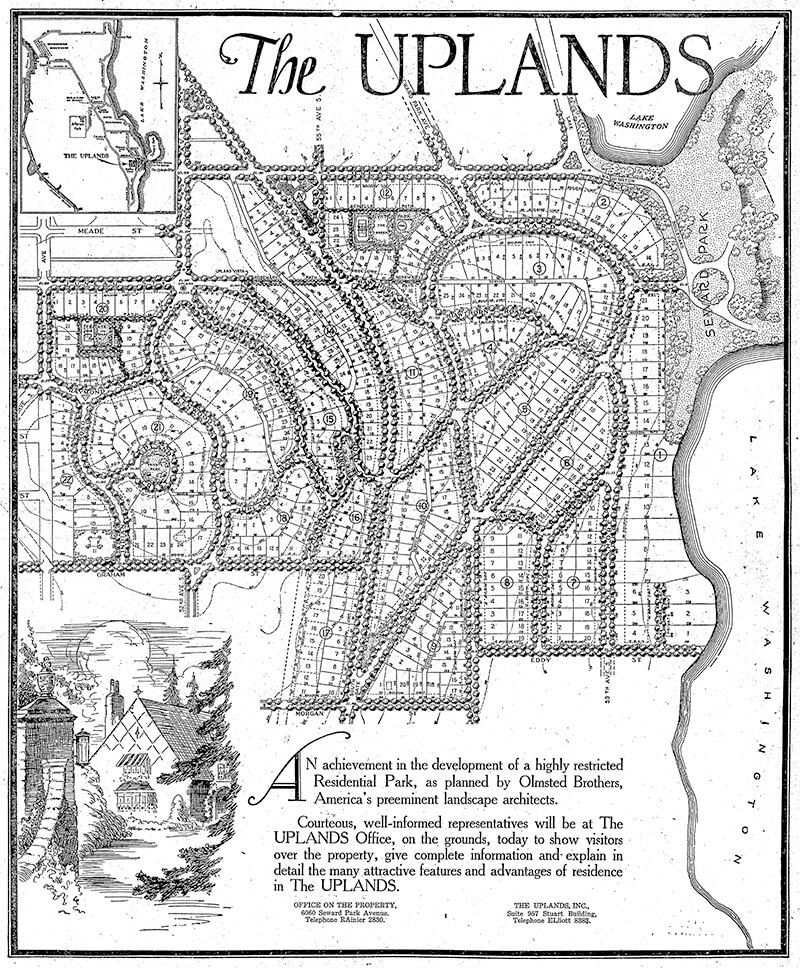This street was created in 1926 as part of the plat of The Uplands, so named for its location on a hill overlooking Seward Park. Designed by the Olmsted Brothers firm, it was advertised as “a highly restricted residential park” (see below, The Seattle Times, September 27, 1925). A separate advertisement that ran on September 30 of the same year spoke of the “protective restrictions by which the home sites are safeguarded,” and another one on October 9 described The Uplands as “a residential district so carefully planned and highly restricted the home owner may look into the future with full knowledge and assurance that his property will, for all time, be safeguarded and protected.”

Neither the Friends of Seattle’s Olmsted Parks nor the Seattle Civil Rights and Labor History Project have found any evidence of racial restrictive covenants for The Uplands, though it’s marked in the latter’s database as “restrictions were advertised in newspapers and enforced by realtors, but deed records have not yet been found in partial search.” As the Friends of Seattle’s Olmsted Parks’ history of Seward Park notes,
…In 1960 a group of white neighbors, led by realtor John L. Scott, tried to prevent an African American physician and his family from moving in. The Civic Unity Committee (CUC) documented what happened. Dr. J.R. Henry ultimately moved his family in without disturbance that December, though Scott delivered a parting message saying Henry was “no gentleman” for refusing Scott’s offer (to buy him out).
You can learn more about the Henrys’ story in this article by KUOW’s Isolde Raftery.
Today, S Upload Road begins at Wilson Avenue S and goes 1,000 feet northeast to S Hawthorn Road.
Born and raised in Seattle, Benjamin Donguk Lukoff had his interest in local history kindled at the age of six, when his father bought him settler granddaughter Sophie Frye Bass’s Pig-Tail Days in Old Seattle at the gift shop of the Museum of History and Industry. He studied English, Russian, and linguistics at the University of Washington, and went on to earn his master’s in English linguistics from University College London. His book of rephotography, Seattle Then and Now, was published in 2010. An updated version came out in 2015.
I guess John L Scott was a giant bigot, and horrible person.
Giant bigot and horrible person? Not necessarily. Unfortunately, this attitude was not atypical of the time. But tell me, what would you call someone like this (from the KUOW article linked to above)?
Or this?